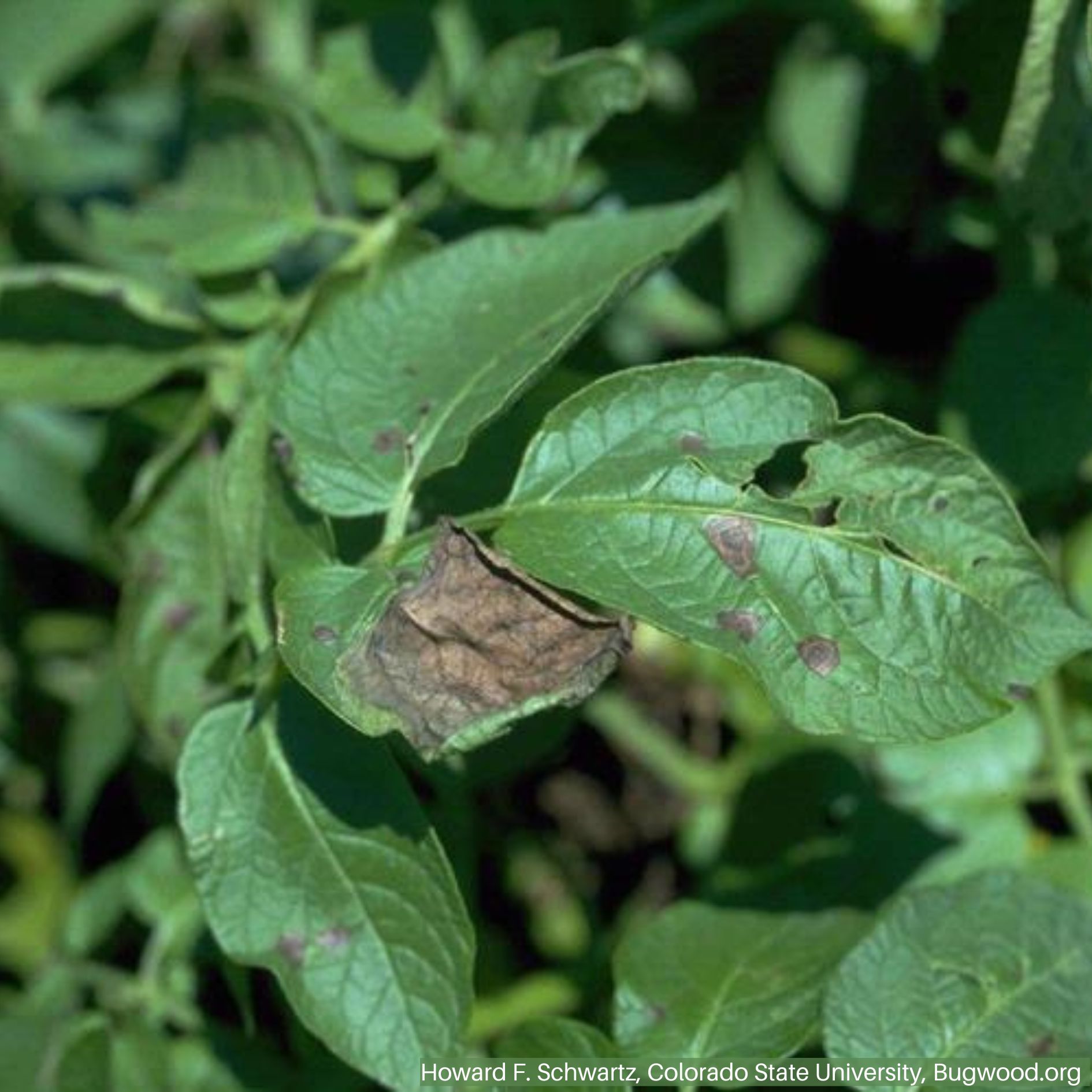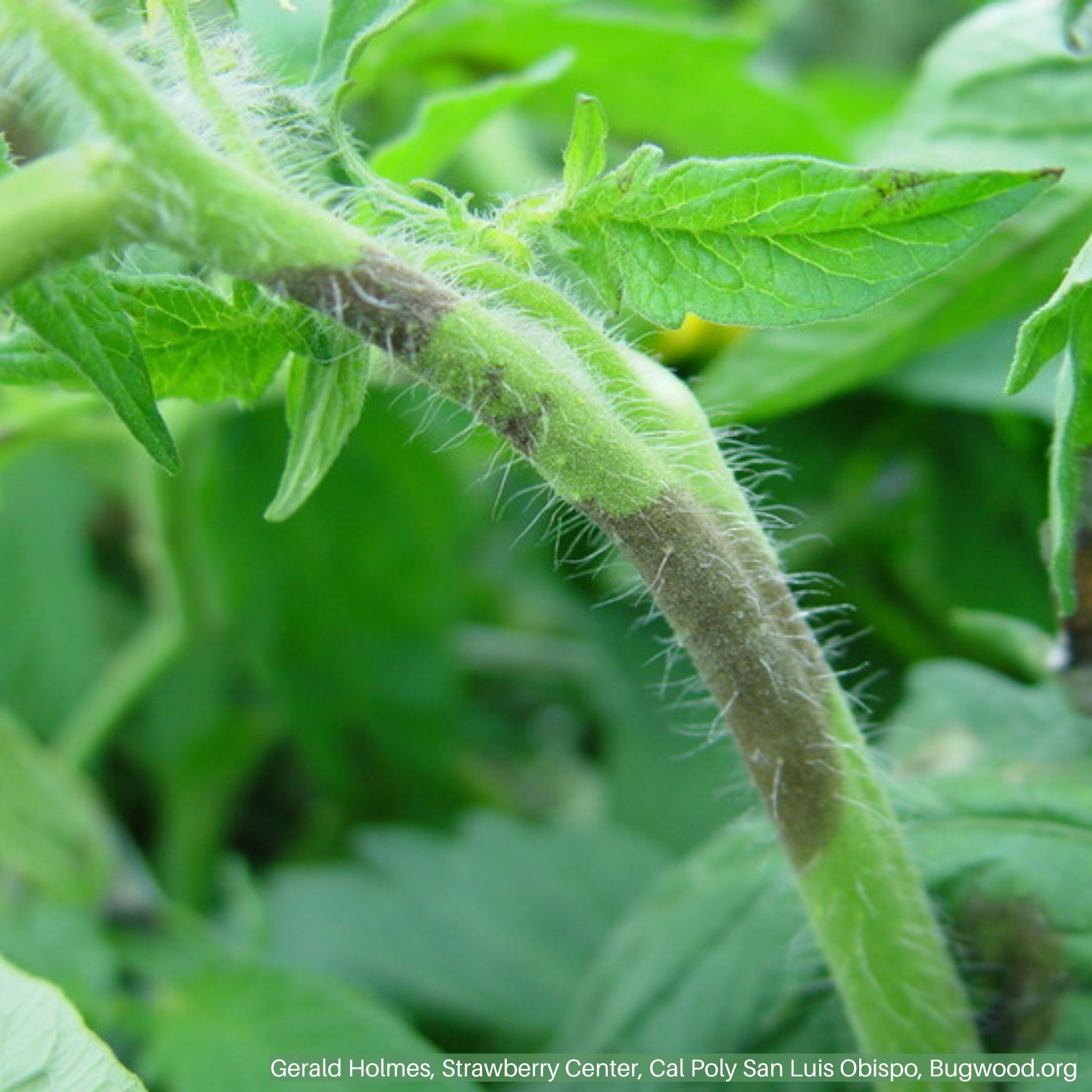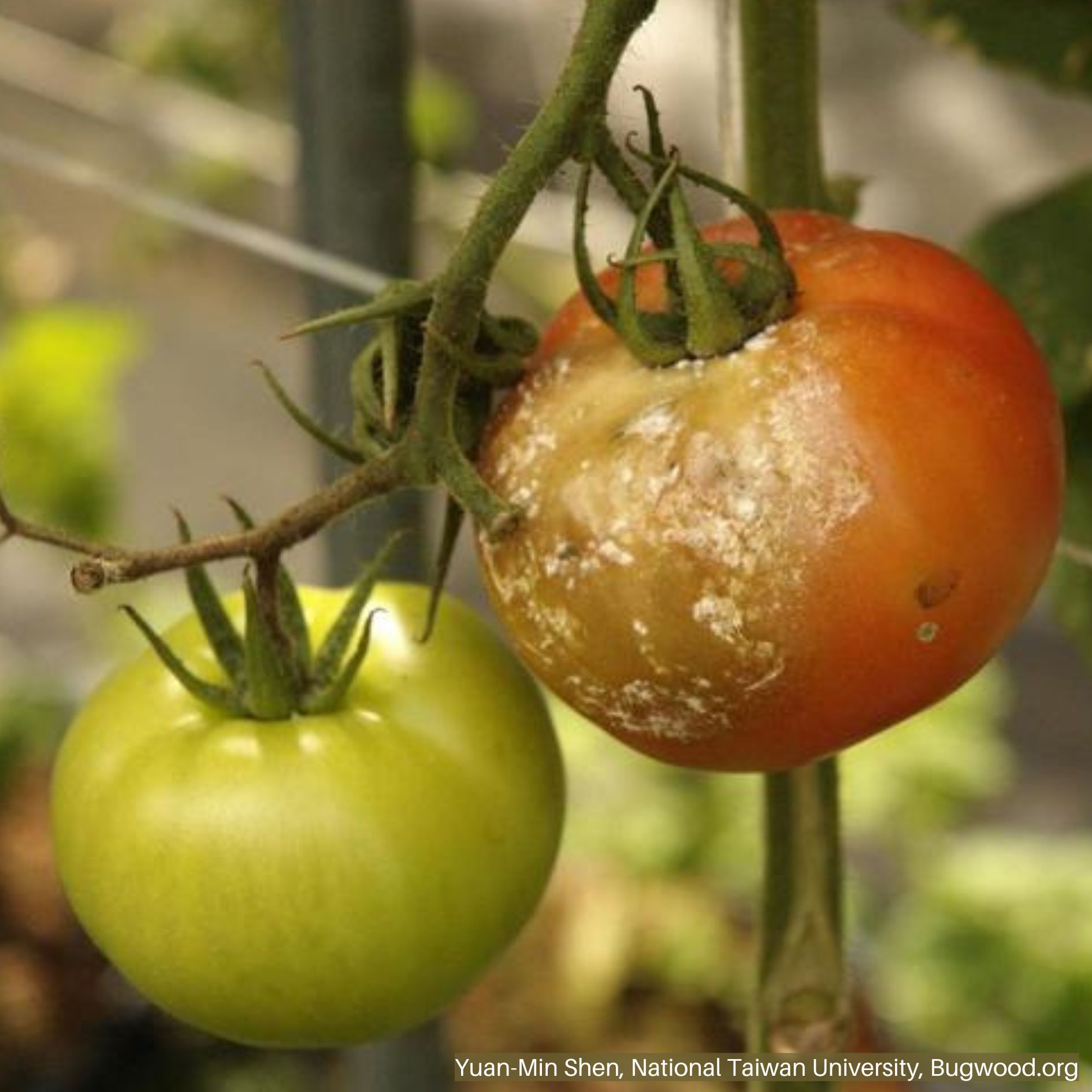Late Blight
 Lesions on potato foliage
Lesions on potato foliage Late blight symptoms on tomato stem
Late blight symptoms on tomato stem Tomatoes with blotchy lesions and white fungal growth
Tomatoes with blotchy lesions and white fungal growth Infected potato with lesions
Infected potato with lesionsHOSTS
- Potato
- Tomato
BIOLOGY
Late blight is caused by the fungus Phytophthora infestans. It is a concern when leaves are wet for more than 10 to 12 hours at moderate temperatures (60-80°F).
- Overwinters in infected potato tubers left underground or in cull piles.
- Under wet conditions, spores form in early spring and are carried for miles to cause primary infections on succulent plant tissue. Storms from southern states can also contribute to spread of spores.
- Later in the season, infected tissue releases additional spores, causing new secondary infections and sometimes, epidemics can wipe out entire fields.
SYMPTOMS
All above-ground portions of plants can be infected, plus potato tubers. Lesions on leaves and stems start as a greasy-gray blotch, and eventually turn black. Infected tomato fruits and potatoes develop hard, brown, blotchy lesions that extend into the flesh
GENERAL MANAGEMENT
Epidemics are rare and localized in Utah.
- Start scouting for this disease soon after planting. Early detection is important; as rapid spread can occur.
- Check wet areas of the field first (low spots in the field, edges near hedgerows, shaded areas, etc.).
- Eliminate cull piles, plant debris, and volunteer potato and tomato plants.
- Once the disease is detected, immediately remove and destroy infected plants.
- Avoid overhead irrigation and excessive nitrogen applications.
- Rotate out of tomato or potato for two years.
Fungicides are necessary where the disease has occurred in the past.
Click here for fungicide options for commercial farmers.
Click here for fungicide options for home gardeners.
Precautionary Statement: Utah State University and its employees are not responsible for the use, misuse, or damage caused by application or misapplication of products or information mentioned in this document. All pesticides are labeled with ingredients, instructions, and risks, and not all are registered for edible crops. “Restricted use” pesticides may only be applied by a licensed applicator. The pesticide applicator is legally responsible for proper use. USU makes no endorsement of the products listed in this publication.

